Medieval Weapons
Here we will cover medieval weapons mostly from a historical perspective. Our aim is to provide an overview of what exists and to help people sort out and differentiate all of the many different items out there. We hope to sort out confusion with similar and related items. You should come away from reading this with an understanding of how different types of swords are related to each other. You should be able to tell the difference between a mace, morningstar, and flail. Next time you find yourself riding into battle, you will be better prepared.
We start out with a huge section on swords. Don’t worry, we talk about all sorts of other great weapons after this seemingly endless section.
Medieval Weapons - Swords

Many of these have evolved over time. We cover swords belonging to overlapping periods including Roman antiquity (before the Middle Ages) and the Renaissance (after the Middle Ages). It is important to be aware of the continuity, how they have developed, and how they are all related. Most importantly it is good to be able to differentiate between them and understand these differences. Of specific interest, there is a long chain of development that brings us from the Spatha to the Zweihänder and the Rapier.
Seax
This is basically a knife, dagger, or short sword. It was popular during the migration period and early middle ages. The old word literally meant knife. We now use the word to refer to the sword/dagger/knife weapons of this period. This was a Germanic weapon. It comes in somewhat varying shapes and sizes. They were single-edged. The handle was made of organic material. This could have been something along the lines of horn or wood. It would have been more common and would have been a more Germanic weapon than the Spatha which was evolving at the time.
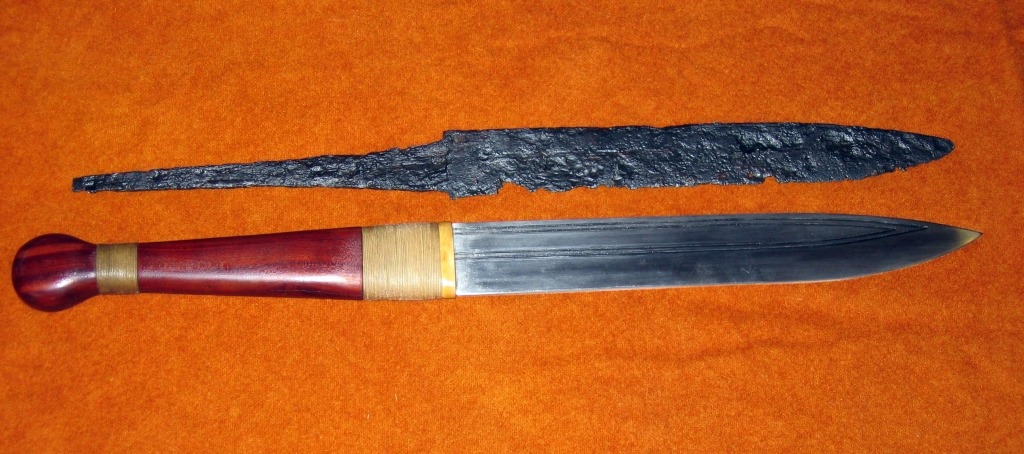
Xiphos - Greek
This was a Greek sword with a very long history. The xiphos was basically a short sword with somewhat of a leaf shape. This shape was great for bronze and iron weapons because they of how soft these metals are. They don’t have the strength of steel. Early versions of this sword were made of bronze. It had spread around Europe in various forms. These were great for cutting and thrusting. There existed different European swords that basically had the same design. The Celtic La Tène short sword is an example of this.
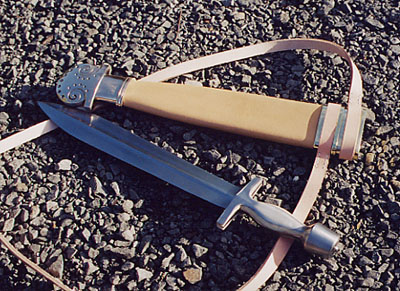
Gladius - Roman
This belongs here because it is important and it relates to the other swords that we discuss. It is important to see how these all interrelate in a historical context. This isn’t a medieval weapon but it does related to weapons that do belong to the medieval period. This was the main sword used by Roman soldiers. These were good for thrusting as well as slashing and cutting. A soldier would generally be equipped with a gladius, a shield, and a couple Javelins. The gladius is believed to be descended from either Celtiberian troops or through Gallic troops (so Celtic in origin). Before this the Romans used swords that were more similar to Greek swords. Probably something along the lines of a Xiphos, but I’m not sure. The gladius was eventually replaced as a standard weapon by the Spatha. The Gladius was generally shorter than the spatha.
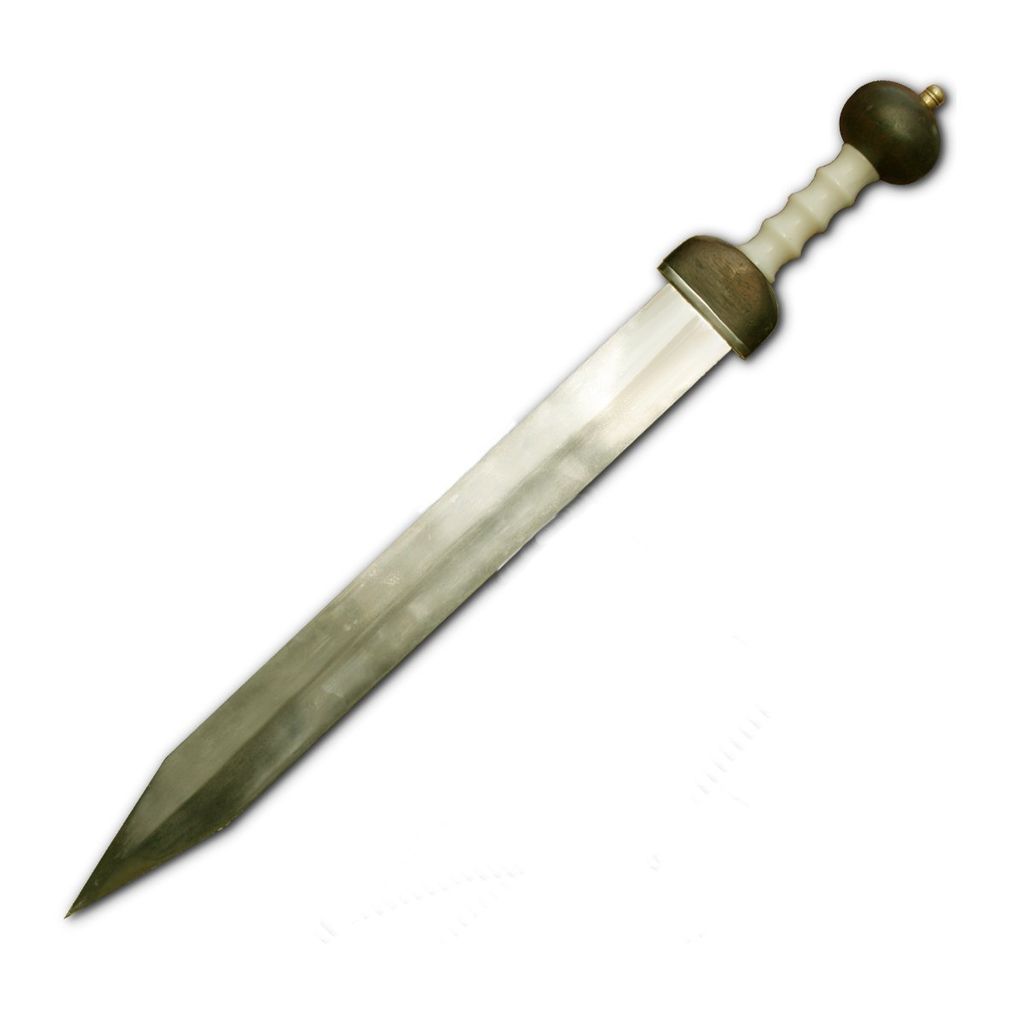
Spatha - Roman Sword
The Spatha is a Roman sword. It is long and straight. It was used between around 0 and 500 AD. It is generally between three quarters of a meter to a full meter long. It was used both as a weapon of war and in gladiatorial combat. Its actual origin is unclear but it is believed to be descended from either the Pompeii Gladius or some type of Celtic sword. It is believed to be originally used by German auxiliaries before being adopted by normal Roman troops. Before this, a fully armed Roman soldier would have been armed with a gladius instead. A gladius is a shorter Roman sword and was the main sword used by ancient Roman troops. For a fully armed Roman soldier, a gladius would have been combined with a shield, two javelins, and a dagger. The gladius was gradually replaced by the Spatha. It gave soldiers better range when attacking. It became a standard heavy infantry weapon. Cavalry and footsoldiers had different versions of the spatha. Footsoldiers would carry a more pointed version because they were less concerned with accidental injury to their horse since they were on foot. This weapon remained popular in Europe during the Migration Period. It further evolved to give us the Viking sword. While this was originally an older weapon it provided influence for subsequent swords of the medieval period.
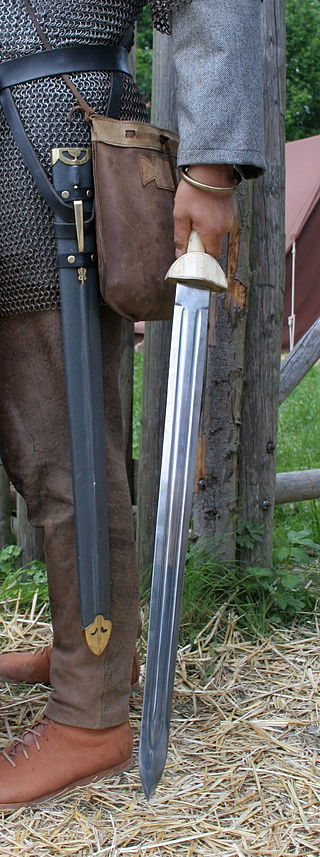
Migration Period sword
Note, this can also be referred to as the Merovingian sword.
The blade of the migration period sword is generally more straight. It doesn’t taper very much. The tip is most often rounded. It can range from round 710 to 810 mm. The fuller was either shallow or smooth. It featured pattern-welding, in multiple bands, basically down the center of the sword. The handles were not metal so they didn’t last. We don’t have many with surviving handles. The rest of the sword would last, just not the handle.
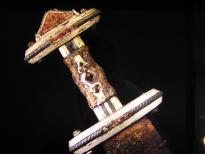
The migration period sword evolved from the Roman Spatha. It later evolved into the Viking sword. The spatha had been adopted by Roman troops and had spread to northern areas of the empire. It was then adopted by Germanic tribes. Actual spatha were generally used by Roman troops in Germania not so much as an actual german weapon. There was a type of sword called the Krefeld-type. This was a type of spatha that started to show Germanic influence and could be distinguished as Germanic.
Around the time of the collapse of the Western Roman Empire, Germanic swords started to be produced as part of an emerging native industry. The newly produced Germanic spatha was used along with existing weapons but was generally seen as being more desirable. People still used spears and the seax. An actual sword would have been somewhat of a premium option.

The ring-sword is a specific type of Germanic migration period swords. These are named after the ring that is connected to the hilt. These are also known as the ring-hilt spatha. They were popular throughout different areas of Europe and spread to areas including England and Northern Europe. They were on the expensive side and not everyone could have one. Note that these are different from the irish ring-swords that came in later periods and featured a pommel crafted in a ring shape.
There seems to be some overlap between the Roman spatha and the more Germanic swords of the period. There was a fair amount of development and evolution that led to distinctly Germanic Swords in this period. This gradually moved closer and closer towards the later types including the Viking Age sword. This actually could be referred to as the Germanic sword. The wikipedia entry for this name redirects to the migration period name.
Viking Age Sword
This was common in Europe during the Early Middle Ages. The Viking Age sword can also be referred to as the Carolingian sword. The Viking sword evolved from the Migration Period sword. It later evolved into the Ulfberht and then the Knightly sword. Swords were still expensive during this time. Not everyone could afford one but they were more accessible than in the migration period. The Viking sword gradually started to serve as a replacement for the seax. Better steel led to narrower blades, more tapering, and less pattern welding. Better steel was the biggest thing that set the swords of this period apart.
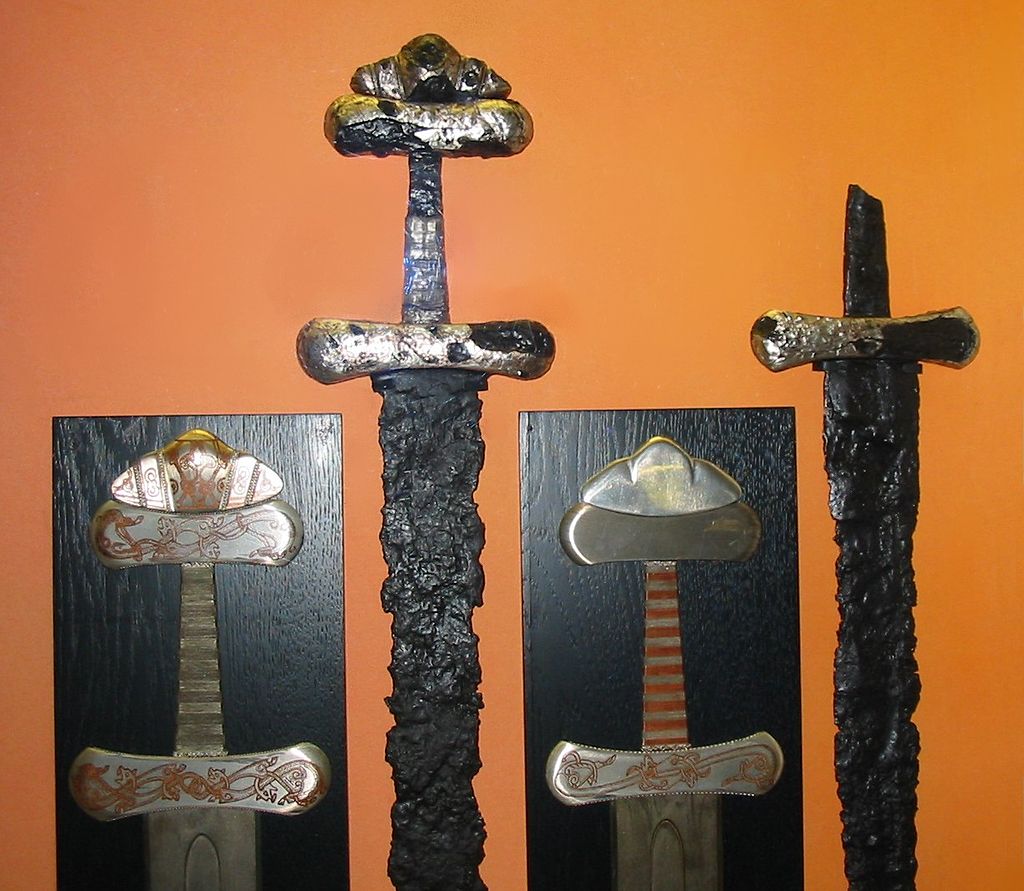
Like the spatha and Migration Period swords, this was a double edged blade. It was meant to be held with one hand along with a shield. The shape still very much resembled the spatha. The cross-guard was not as developed as later swords. The expense of the sword made it less common than other weapons at the time. It was a sign of high status and honour. The sword had a special place in society at this time and was held in high regard. It was seen as something more than just a weapon or tool. This importance would continue to be a key cultural component.
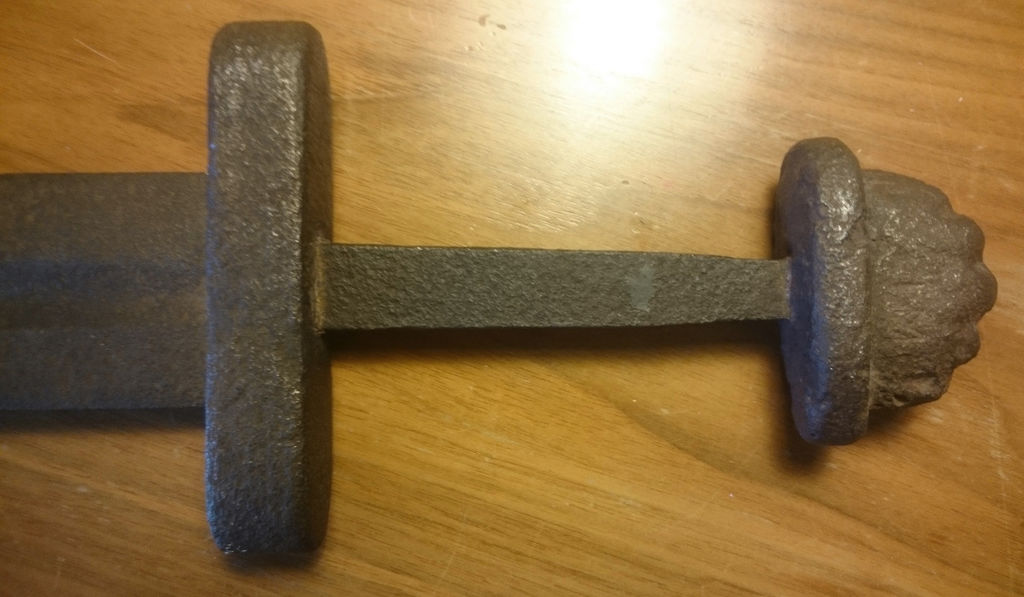
Ulfberht Swords
These served as a transitional weapon between Viking and Knightly Sword. They would often have an inscription on one side and a geometric braid pattern. Swords were still constructed using pattern welding most of the time but more higher quality swords were starting to be constructed using crucible steel. Steel and crafting methods varied widely among Ulfberht swords. They were known specifically for having higher quality steel. This was important because the wielder was basically counting on it to keep him alive. These were spread throughout Europe. Some have characterized this as a sub-type of Viking sword with quality as one of the specific defining characteristics. Ulfberht swords tended to be more expensive than other types at the time. They were generally made with crucible steel. They contained much less slag and much more carbon. This made them stronger, more flexible, and less likely to break. The steel is thought to have been imported from eastern Iran in furnaces that were vastly superior. These swords tended to be of higher quality steel than anything else seen until the late 1800s.
On Wikipedia
More Info

Knightly Sword
The term knightly sword is a modern term. It refers to this specific sword during the High Middle Ages. Often called the arming sword. This term was used more once this weapon started to be used more as a side-sword. In the context of the late Middle Ages, it may refer to the estoc when used as a side-arm though the estoc is basically a totally different weapon. This weapon evolved from the Viking and Ulfberht swords.

The pommel, blade, and crossguard all changed to some degree since the Viking sword. The biggest change was that the front hand guard increased in size. It grew to be a full cross-guard. This is the biggest and most striking change. The blade became more tapered which also results in a shift in its balance. The pommel is generally smaller than a Viking sword. Instead of being large and lobed the pommel is now either disk or hazelnut shape. The pommel has become a bit more simple. Earlier pommels for this generation of sword commonly tended to be what has been referred to as ‘Brazil-nut’ type. Later pommels included wheel shaped varieties. There were actually many different types of pommels in use for this weapon.
This sword is generally straight. It is single handed though it later develops into single and double handed versions (different types). It is always double edged. It ranges in length from 70 to 80 cm.
The knightly sword was in common use during the High Middle Ages. It was typical during this time. During this period it was generally used together with a shield. Later on, during the Late Medieval period, this sword was more often used as a side arm. It also developed into the two handed Zweihänder during the Late Medieval period.
This sword eventually develops into the side-sword, rapier, reiterschwerter, and broadsword of early modern times. A heavier version of this (used by the Doge of Venice) also develops into the schiavona and then into the basket hilted sword which then develops into the cavalry sword.
The knightly sword might be thought of as a generic or standard sword. This is in the sense that it is the ideal model of what a sword is. When you hear the word sword, this is usually the image that pops into your head. This is what you would use if you were planning to slay a dragon. Besides being super practical it is really just the most appropriate weapon for such an undertaking.
Estoc
The term estoc is a French word (meaning thrust) but seems to be the most common term for this weapon. The English term is tuck. This is a variation of the long sword that is designed for fighting against mail or plate armor. When we say long sword, we mean longer variants of the knightly sword. It is straight. It has no cutting edge but it is very pointy. It is a two handed weapon. The length of the blade can range from around 0.91 meters to 1.32 meters though there are some examples as long as 1.57 meters. This weapon was popular for mounted fighters. It was also great for competition fighting (tournaments) as the lack of a sharp edge meant there would be less risk of injury. Another use for this weapon was hunting while on horseback. It was more dangerous and less practical than using a spear but it was also seen as more exciting. It would bring more glory to the hunter. It was long enough to reach animals while still remaining mounted on horseback. A somewhat shorter variation of this sword is used for bullfighting.

Zweihänder
This name is actually german for “two hander”. The Zweihänder evolved from the knightly sword, specifically the longer versions (long swords). It is one of several to develop from this same sword. Beyond just being a really long knightly sword the Zweihänder developed side rings on the hilt and parrying hooks, both of which were optional features that appeared on later versions. It was used more in the earlier part of the 1500s. After this time, it became less of a practical weapon to use and was more or less ceremonial (or just a really cool sword to have). It is a large two handed weapon which was a natural development as swords had been tending to increase in size for a while. It is carried across the shoulder instead of hanging in a sheath. It can also be called the Doppelhänder, which means "double-hander". Another name used would be Beidhänder, meaning "both-hander". This is a really big sword. It is at least 1.4 meters long. It does tend to get heavy too.
Flammenschwert
This is basically just an Zweihänder with wavy blade. It is a double edged, two handed sword. The main thing that sets it apart is that the blade is wavy. This is actually the only thing that sets it apart. The name comes from fact that the blade looks like a flame. These aren’t just decorative swords, although they can be. They do have features that are great for combat. When this sword is used to parry, it may cause the opponent's sword to sort of vibrate, which I guess could throw them off and make things harder. It also slows down another blade that is sliding against it.
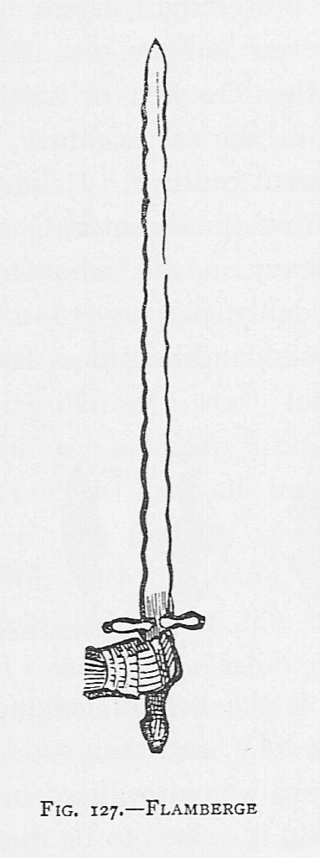
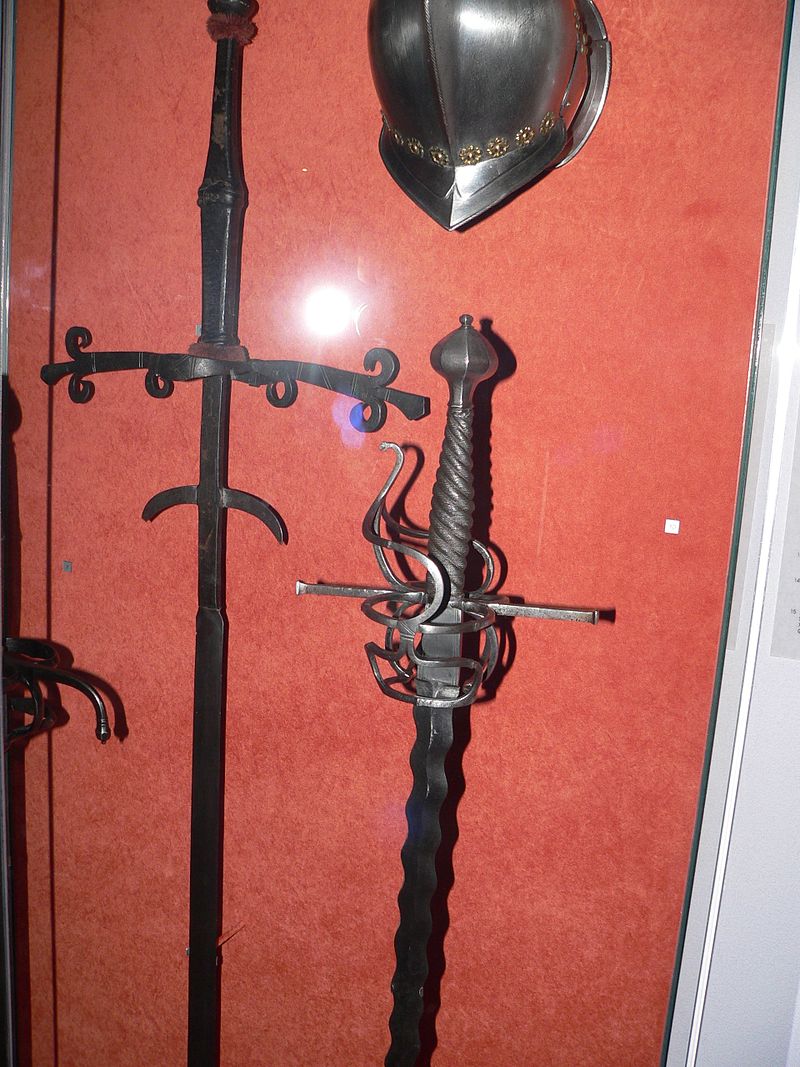
Side Sword (Spada da lato)
Popular during the late 1500s (post Middle Ages). It evolved from the knightly sword ( arming sword ) and then evolved into the rapier (Early Modern). Great for both armored and unarmored soldiers. It included an additional finger guard that wasn’t present in earlier swords. Originally, the term is thought to have meant any sword that is kept at one’s side. Today, the term refers specifically to this sword. It does look like a pretty neat weapon. It seems strong and sturdy while being easy to carry around. It is almost as iconic of a weapon as the knightly sword.

Long Sword and Other Ambiguous Terms
Personally I don’t like this term as it is very unspecific. It is generally ambiguous and tends to cause confusion. The only thing that this term can tell you definitively about a sword is that it is long. It may be used to refer to the bastard sword but this is only true when discussing swords of the Late Middle Ages or potentially the Renaissance. To elaborate on this, a long sword, depending on context and time period, could refer to any of these: estoc, Spatha, knightly sword, Zweihänder, Rapier, and others. The one thing to remember is that the terminology used to classify swords is very ambiguous, convoluted, and confusing. It is further complicated by the differences between multiple languages and by the fact that terminology changes over time. A term may be used to mean one thing historically but be used to refer to different things in different time periods. This doesn’t just mean that a word changes once. It may have different meanings in three or more different periods. Context makes a huge difference too.

There are a variety of terms that serve to signify the size of a sword. These include short, bastard, long, and great swords. During the Middle Ages, these terms refer to the size of a sword and not the style or morphology.
A two handed sword really just refers to anything that can be held with two hands. That's it, it could be any of a number of different weapons that can be held with more than one hand.
A great sword can refer to any sword that is long and generally two handed, either Medieval or Renaissance. It is also the literal meaning of the term Claymore ( a completely different sword ). Some people actually DO contrast great swords with long swords in general. The term may be used as just another way to refer to the Zweihänder. One interesting thing to note is that they were not as heavy as some would have you believe. They were actually relatively light for their size and were some what maneuverable. More Info Here
The bastard sword is basically a longer sword with a handle that is somewhere between one handed and two handed. It has been called the hand-and-a-half sword. This weapon is very much worth mentioning and deserves to be discussed. The term is based on size so I wouldn’t use it to refer to a specific type of sword. It basically just refers to the size of the handle. It significant and is worth understanding.
Claymore
The term claymore is actually the anglicised version of the Gaelic word for “great sword”. So it is a long two handed sword. The term refers to a type of Scottish longsword. The crossguard is v-shaped. The crossguard would have decorative quatrefoils on the ends. It was generally about 140 cm long total (ex: 33 cm grip, 107 cm blade). It was used in the late medieval period.

Some people use this term to refer to a Scottish basket-hilted sword. That is something different which we will discuss separately.
This is a pretty cool sword. If you were to fight a dragon and you happen to be totally crazy, you might use this instead of the normal knightly sword that people usually use when fighting dragons. Besides not being able to use it with a shield, this would be a totally valid weapon to use when fighting dragons.
Backsword
We need to talk about the backsword. It has a straight blade (except Sabres) with a single edge. The handle is designed for single hand use. It is usually built with a knuckle guard. These weapons are easier to construct than double edged swords. They are also cheaper. They were in used during the Middle Ages and later periods.

My first guess is that it would have been named this because it is worn on the back. This is actually not the case. The name is based on the back edge of the blade. The back (non-cutting) edge is flat. This leads to the name backsword.
Sabre
We aren’t going to say too much about the sabre. It isn’t really a Medieval weapon. It did develop out of some trends during this period but the actual sabre is more of a modern weapon. It is basically a backsword with a curved blade instead of a straight blade.
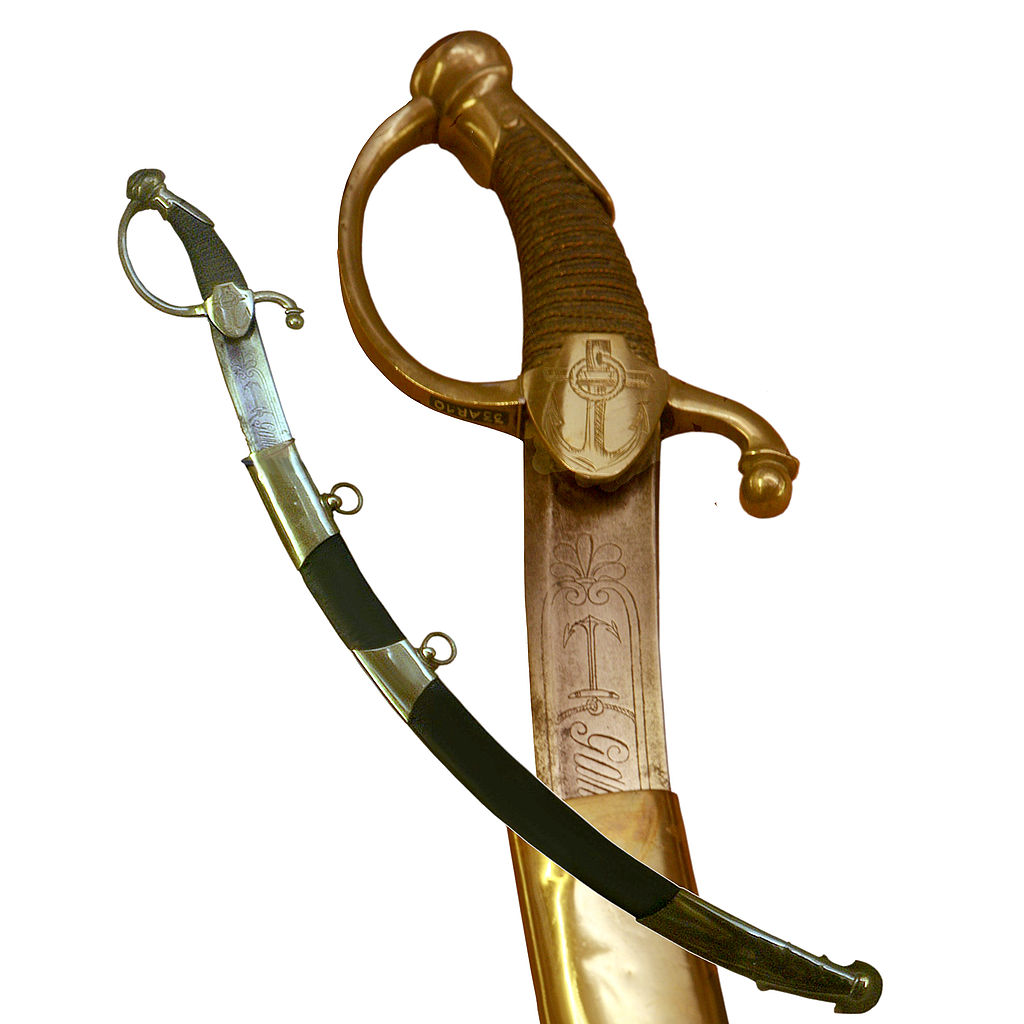
Rapier
This is sword with a slim blade. It is designed more for thrusting and comes to a fine point. It can be used for slashing but isn’t really geared towards that. It is meant to be used as a thrusting weapon and is meant to be used with very quick movements. The rapier is a modern weapon, not Medieval but still worth mentioning here if for no other reason that to help distinguish it from other swords. Depending on the context this term can sometimes be used to refer to other weapons such as the side sword or the small sword. It seems to have developed from the former and into the later, though it existed in parallel with both.

The hilt of a rapier is really fancy. It is designed to protect the hands. It is usually composed of multiple rings and can sometimes include metal plates or even an entire metal cup as protection. You really need to see the pictures to get a good idea of how these actually look. They very greatly as well.
This is definitely a much cooler weapon than the Sabre. This is what you generally think of when you consider the sport of fencing.
Small Sword
This was a more modern weapon, not Medieval but still important to mention to show continuity. This is basically a really small, short version of a rapier. That's about as much detail as we are going to go into with this.

Basket Hilted Sword
This is the type of thing you might expect to see half buried in a pile of gold coins and jewels inside an overflowing treasure chest. I’m sure this isn’t really a common place to find such a weapon though. This isn’t really a weapon of the Middle Ages but it needs to be discussed for many of the same reasons that we discuss other out of scope weapons. It features a basket shaped guard connected to the hilt which is where it gets the name basket hilted sword. It also may be referred to as a broad sword, probably because the blade is in fact broad. These swords were double edged not single edged. These were great for both cutting and thrusting. They were geared more towards military use than the rapier but could still sometimes be used by non-military. They didn’t start out as ornate but became more and more decorative as the weapon developed. There is a huge number of different varieties and subtypes. These include the Sinclair hilt, Walloon hilt, schiavona, Scottish broadsword, mortuary sword, and some pallasches.
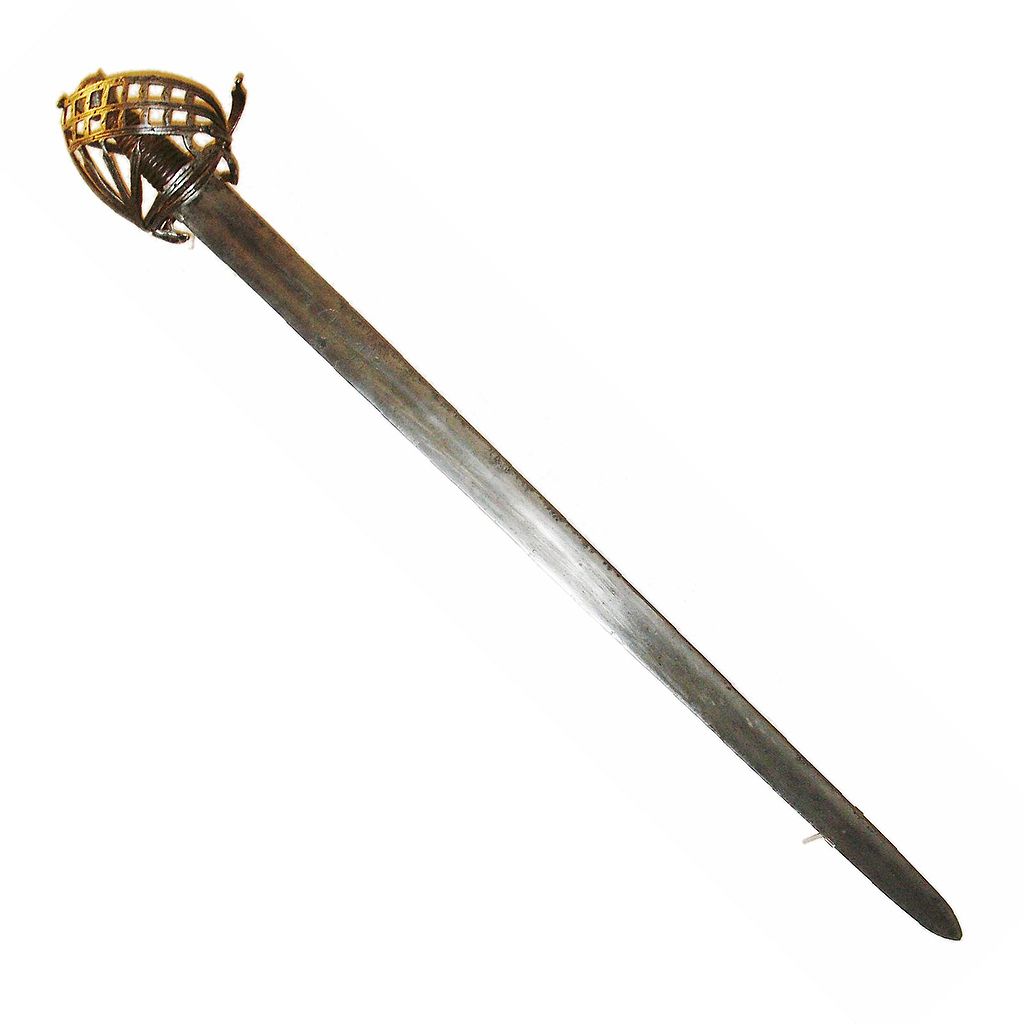
Broadsword
This term could either refer to the basket hilted sword or the claymore. I think it makes more sense to use it in reference to the former. Either way, it is a somewhat ambiguous term and should probably be avoided.
Scimitar
This is basically a backsword or sabre that has a curved blade. It is Turkic/Arabic/Middle Eastern. It was in use during the middle ages and has exposure in Europe as well.
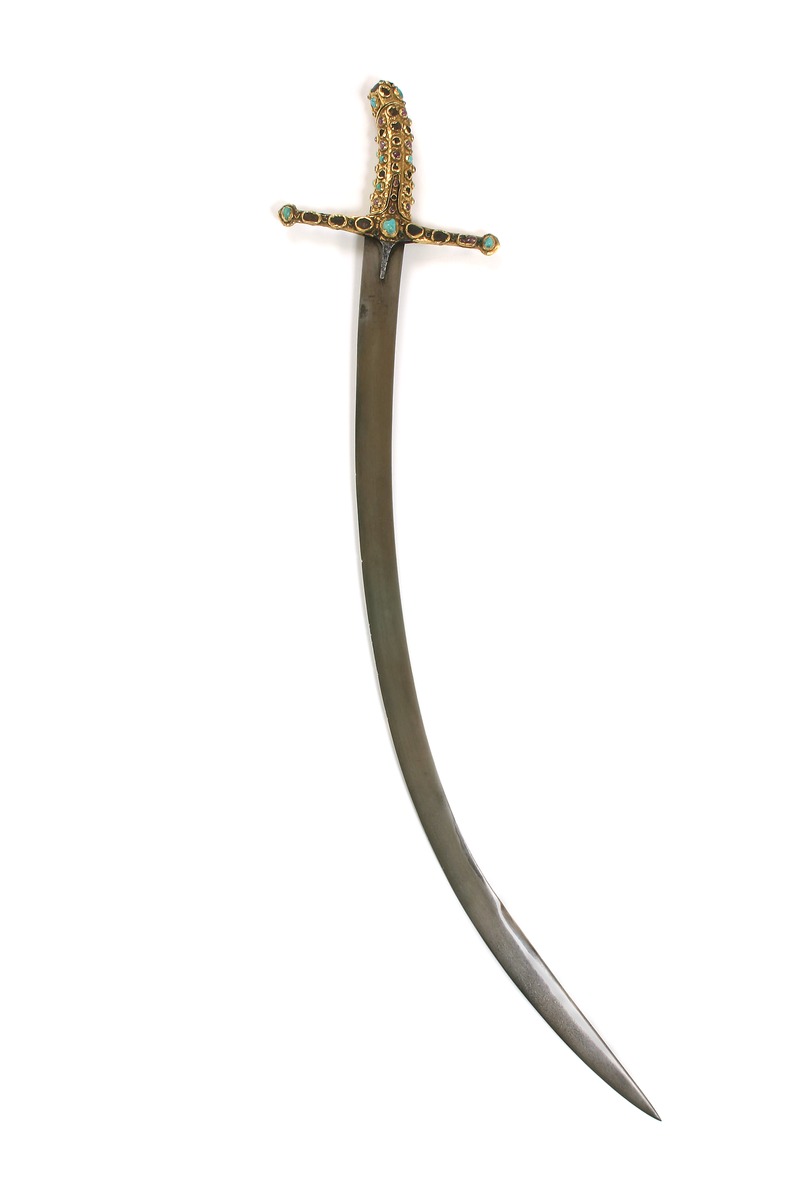
Cutlass
This is basically a pirate weapon ( a little more than just that ). It is kind of out of scope so we aren’t going to really discuss it.
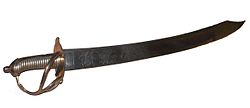
Falchion
This is a one-handed, single-edged sword. The cross guard and hilt are similar to a knightly sword. It is European and was in use during the Middle Ages. It is thought of by some as a peasant's weapons since it has a lot of practical, non-combat uses but it turns out that this isn’t always the case. Some were used by knights and nobility.

Paramerion
This is an Eastern Roman Byzantine sword. It is single edged. They are significant but that's all I’ve got for these.
Khmali sword
This is an early Medieval Georgian sword. That's all I’ve got for this one.
Bilbo (sword)
This is a cup hilt sword. It basically has a metal cup or bowl shaped piece connected to the hilt. Many of these swords were made in the city of bilbo which is where the name comes from. They were popular in the New World but also distributed around Europe. They were also very popular aboard ships. They were considered a practical weapon.
Celtic Swords
There seems to be a lot of background we are missing regarding Celtic swords. This unfortunate and we hope to add a section on this later. For now, this will remain as gaping hole in this article that needs to be filled.
Medieval Weapons - Blunt or Cleaving
Battle Axe
A battle axe is basically just an axe that is designed for battle. Combat would be their primary purpose. The would have been somewhat based on the same principals as normal utility axes but designed for warfare. After a certain length it would be considered a polearm. Usually anything longer than 1.5 meters long would be considered a polearm. Two polearm variants of the battle axe are the halberd and the poleaxe. They were very popular during the Migration Period and the Viking Age. They were also used throughout the rest of the Middle Ages. They could be single handed or two handed. Often times they were used while on horseback.
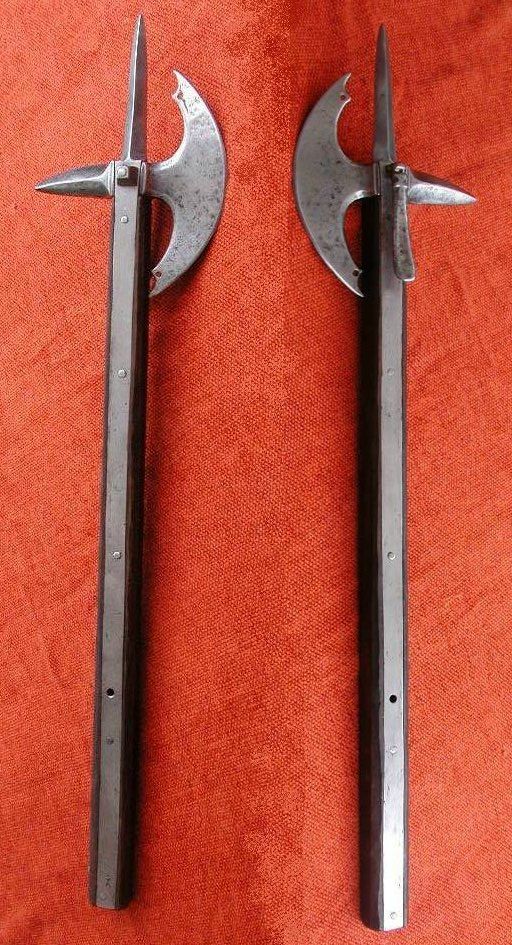
The battle axe was a prominent weapon that fighters would be proud to carry. It would give the bearer a fierce, powerful feel. You could imagine that seeing someone carrying an axe would be quite intimidating. The idea of an approaching soldier or knight with a huge chopping weapon have to strike fear into anyone who values their life. Plate armor became more and more popular in the 15th and 15th centuries. This served to defend against axes and swords more effectively. Many preferred the use of axes. The are featured prominently in stories and tapestries.
Dane Axe
We can go into a lot of detail with long descriptions but for this one, just refer to the picture here.
Club
A club is just about one of the simplest weapons anyone could think of. The only thing more simple and basic would be a rock. Even then a club is basically just a stick. It would usually be a little bit better than any stick found on the ground. It is would usually be cut and shaped to an optimal size. It may be sanded, polished, and decorated. It generally a very primitive weapon that has been used since prehistoric times and is still used today. It is generally what you think of first when you think of an unsophisticated weapon. The are usually made of wood. An example of a metal descendant of the club is the mace which is a bit more sophisticated. A mace may include spikes, knobs, or flanges.
Club have many different variations and subtypes. One type, used in the middle ages, was the cudgel. It is a fat stick that could work as both a weapon and a walking stick. It was typically carried by peasants for self-defence but could also be used in war time. To be fair, it is a very practical and versatile weapon. Note, you might also refer to it as a bludgeon.
Flail
The flail is a very interesting medieval weapon. Everyone loves this one. It is probably one of the most interesting weapons we could possible cover. It is probably my favorite. It is not just a single weapon though. It is actually two different weapons. It can refer to either the peasant flail or the ball-and-chain flail. Both of these involve a handle with a separate striking head. The head could be attached with a number of different things including chain, rope, leather straps, or other options. They have both advantages and disadvantages. One of the tactical advantages is the ability to reach around a defender's shield or block while striking. One of the disadvantages is that is can be difficult to use in close combat. It also may lack precision.
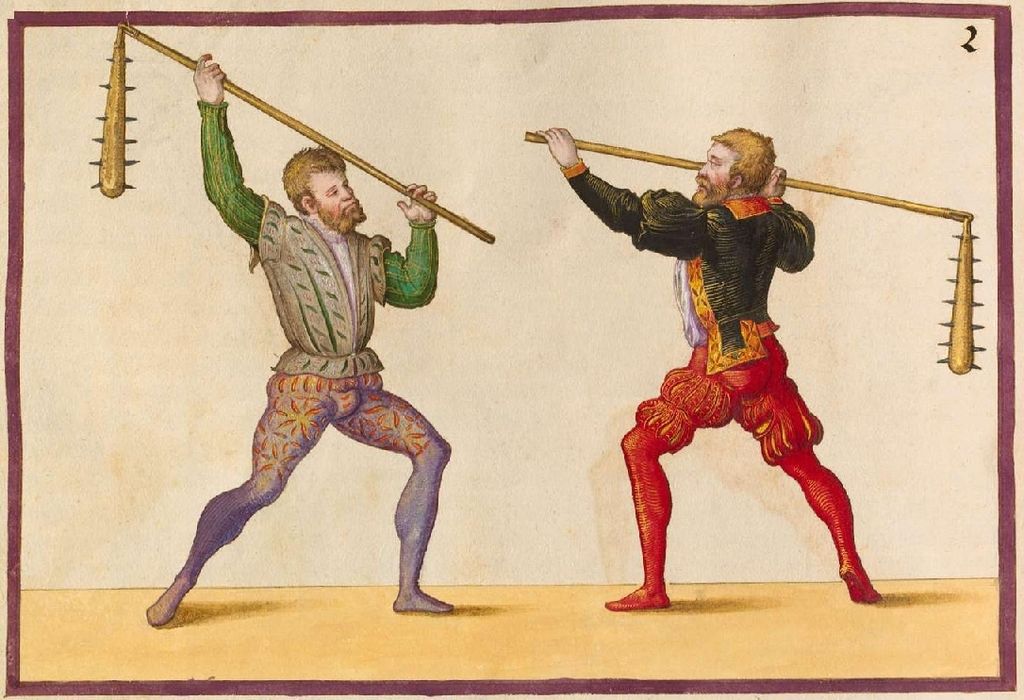
Peasant Flail
The first type of flail we will discuss is the peasant flail. This is based on a farming tool, the grain flail which was a common tool used for threshing. It is generally considered a peasant’s weapon. It consists of a long handle meant to be held with two hands. The head would be connected closely and would serve as a hinge. The head is cylindrical. These are two-handed agricultural flails are not an incredibly common weapon but definitely have a documented military history.
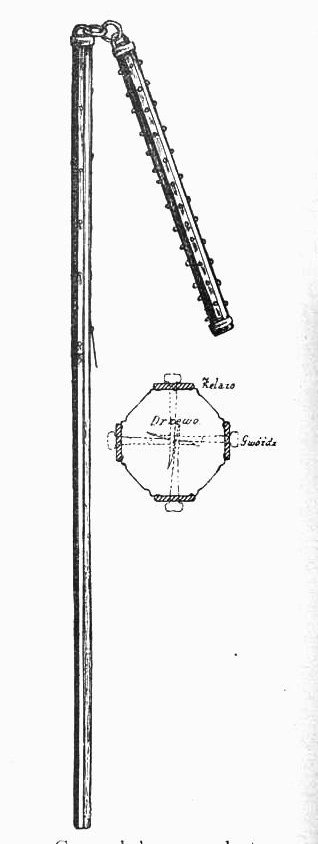
Unsurprisingly, the peasant flail was sometimes used as an improvised weapon. This makes sense considering its origins. It has been used by armies consisting of peasants. These have been formed under different circumstances. In some cases they were pull into military service and needed weapons. In other cases the peasants were part of a rebellion. In either case, this is one of the options that would be available to when they needed to be armed.
Sometimes this specific flail would actually have either spikes or studs on the head ( The farming version did not ). This is evidence that they were modified to be used as weapons. They could also have been specially designed versions the were meant to be used as weapons. There were also shown being used by knights dressed in armor. There are medieval martial arts manuals that show how to use them as weapons. These manuals also show how to defend against them when they are used this way.
Ball-and-Chain Flail
The ball-and-chain flail is what many people think of when they think of a flail. It basically consists of a shorter wooden handle which would be connected to the head. In this instance the head would be a ball ( usually a sphere or something close to a sphere ). The head is connected by a chain. It could also be connected by a leather strap or by rope. It can have one or more heads all connected on separate chains. These heads may or may not have spikes. The handle length can vary. The chain can be very long or very short.
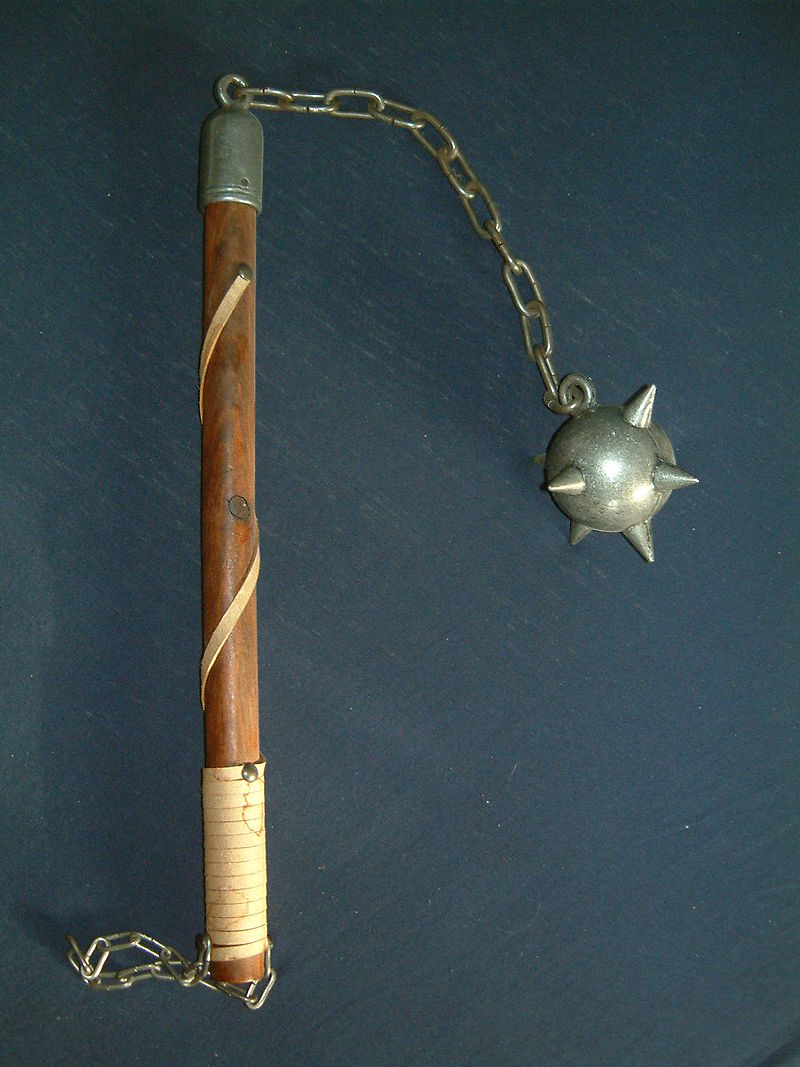
Different names may sometimes be used. It has been referred to as the “military flail”, “chain mace”, or “chain morning star”. These are acceptable alternate terms. Some unacceptable alternate names have also been used. It is sometimes mistakenly called mace or morning star in some references. This is incorrect as the mace and morningstar are completely different weapons that don’t include multiple moving parts.
There are disadvantages to this medieval weapon that would likely have contributed to it being less popular. There are practical considerations to take into account. It isn’t a straightforward weapon to use and could be difficult to employ in actual combat. There would be a large amount of downtime between strikes that could be especially dangerous to the wielder if they were to miss their target.
The ball-and-chain flail is super popular in fiction. It is seen as a definitive weapon of the middle ages. It does seem to have been, at the very least, a very uncommon weapon. Many are not completely sure if it was ever really used as a military weapon. It has been seen in artwork. There is a lack of evidence and documentation of its use. There are not enough artistic depictions. There are almost no text references to its use. Very few artifacts are available as examples. Some of the artifacts and depictions were found not to be genuine. Chances are that this was very rarely used. It almost certainly wasn’t an everyday weapon.
Mace
Another common weapon is the millitary mace. This could also be called a bludgeon. This is similar in concept to a club except that it is more sophisticated. It delivers a blunt force blow and is relatively simple in concept. They are uncomplicated to implement and cheap to produce. They were extremely common. They consist of a handle with a head used for striking. In some instances the handle would be made of wood while the head would be made of metal. In other instances the entire mace would be made of metal.

Besides being less expensive, maces had specific tactical advantages. They were very popular as an effective means of attacking an armored opponent. When sword and axes would not be effective against armor, a mace can cause direct damage. It can do this without actually penetrating the armor. Damaging an opponent's armor is great too though. As armor became more and more popular this became a very important consideration when arming knights and soldiers. Some maces were designed with knobs and flanges which would further assist in damaging armor. A mace with flanges may be referred to as a flanged mace. The pernach and shestopyor are variations of a flanged mace.
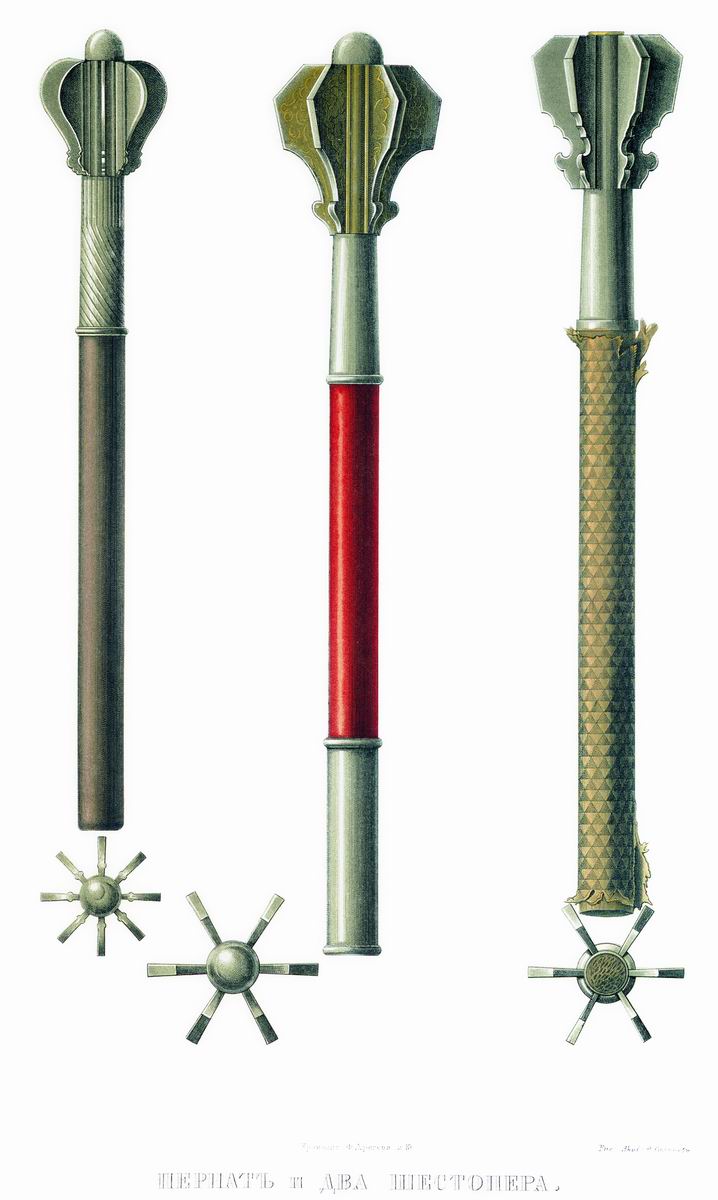
Morning Star
A morning star is another blunt force weapon. It is similar in concept to a more sophisticated version of a club. It holds much in common with a mace. The defining feature of this weapon is that it has spikes. It is basically a handle with a spiked ball. Besides just providing a blunt strike, it serves to puncture the target. Don’t confuse this with the mace. The key difference is that it has spikes instead of knobs or flanges.
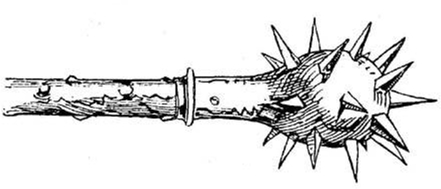
There are generally three different types of morning stars. The first, is the peasant version. This would be hand cut wood with spikes that would have been obtained from a local blacksmith. This would have been used by peasants and people in a militia. The second type is the professional version. This would be likely have a wooden handle that was formed on a lathe. It would be created by an expert who specialized in weaponsmithing. This probably wouldn’t just be a local blacksmith. These would be built for knights and professional soldiers. The third general type of morning star is purely decorative and used more for ceremonial purposes. These would include more decorations and probably include materials like gold and silver.
Plançon a Picot
This is a club like weapon with a spike on the end similar to a goedendag. I think it is supposed to have more spikes on the sides similar to a morning star. It was a cheap weapon to construct and really effective against plate armor.
Goedendag
This is kind of a spear/club combo. It is a simple club like weapon with a spike in the end. It was great against armor.

War Hammer
This is basically a hammer designed for battle. It became more popular in the late middle ages due to the increased popularity of plate armor during this time. It served much the same purpose as the mace and the morning star. That purpose would be to damage an opponent wearing armor. The handle ranged greatly in length. The much shorter single handed version was great for close quarters. The longest versions were long enough to be considered polearms. They didn’t necessarily have to penetrate armor to deal damage.
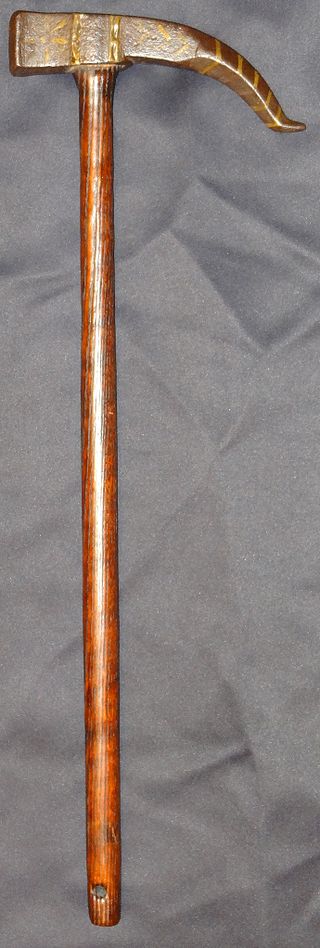
Some versions of this were designed with a spike on the end for increased flexibility. They could be used against horse mounted opponents knocking an enemy off of their horse. The shorter versions were also commonly used while riding on horseback. Another variation of the war hammer is the maul. A maul would have a heavier head and a long handle.
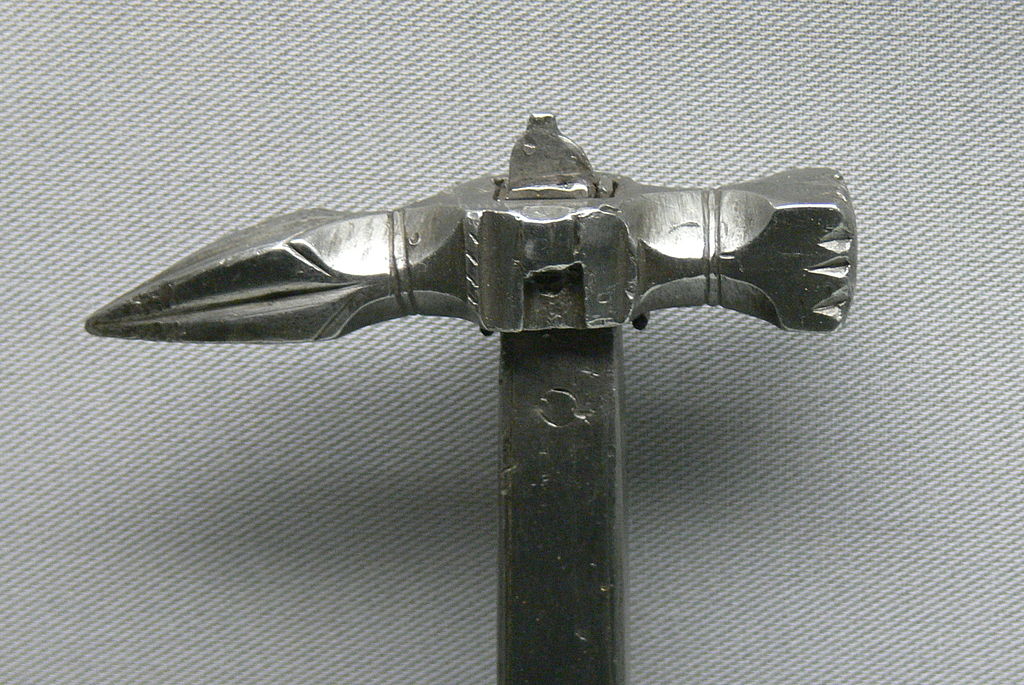
Horseman's pick
The horseman's pick is sometimes just referred to as a war hammer. It is actually a sub-type of warhammer. It is characterized by having an extra long spike on the opposing head of the hammer. It was apparently used by and against horse mounted soldiers. This weapon was sometimes used to rip soldiers off of their horses.
It also, served as a way of penetrating thick armor. Many weapons were developed that could circumvent the protection provided by armor. This is one of those weapons. Swords and edged weapons were becoming increasingly ineffective against armor. Due to this, there was an increased need for weapons that could break through armor or otherwise harm armored soldiers and knights. The horseman’s pick was another effective tool that helped to keep up with continuously developing armor.
It wasn’t the perfect weapon for all situations, as no weapon can be. It had several disadvantages. It wasn’t the quickest weapon in existence since it was on the heavy side. If not careful an opponent could avoid being struck. It also didn’t typically inflict a huge amount of damage and didn’t always kill or incapacitate the target being struck. Sometimes, the weapon could become embedded in the in the target soldier’s armor. This resulted in the loss of the weapon by its wielder. It is actually kind of funny to imagine such situations where you actually might lose your weapon because it is stuck in your opponent. This would be especially disheartening ( and dangerous ) if the opponent wasn’t incapacitated. Your enemy could be running around, continuing to fight, with your own weapon still stuck in the side of their armor.
Medieval Weapons - Polearms
Quarterstaff
The quarterstaff is a type of staff. It is a simple weapon. We’re going to put this under polearms because it is one, even though it is also a blunt weapon. It generally ranged from around 1.8 meters to about 2.7 meters. It is primarily made of wood. Oak was the most common type of wood used. It may or may not have an iron tip on either end. It could also be referred to as a short staff or commonly just a staff. It is great for defense and offence. It was also at times used as a practice weapon in place of a sword.
MoreIt was apparently particularly popular in England during the Middle Ages. It is often mentioned in many stories related to Robin Hood. I would speculate that this is related to its popularity. This is the first thing that usually pops into my head when I think of any type of staff in the context of medieval weapons. It is displayed frequently in popular culture but was also documented in historical legends, ballads, tales, and even martial arts manuals.
If a quarterstaff is referred to as a short staff, you would imagine that there must be such a thing as a long staff. You would be correct in assuming this. There is such a thing. The long staff is not what you typically think of when you think of a staff. It is really long ( around 3.7 meters or so ).
Spear
This is one of the most used weapons of all time. Spears are commonly used in combination with a shield. This is a historical practice and was still very common during the Middle Ages in Europe. Spears can be used for melee combat or thrown. There are many different types of spears. One component that varied a lot was the head. Most medieval spear heads were leaf shaped. They developed into other Medieval polearms including the lance, partisan, and spetum. The were used by both cavalry and infantry.

This was a very economical weapon since it was mostly wood with an iron head. The edges would be steel but most of the head was iron. It was actually really, really common for this reason. For example, people may generally picture vikings as carrying swords and axes but they more often just used spears as did most other people during the time.
Lance
The lance is a polearm. It is meant for cavalry. It is not good for throwing. This weapon was designed for horseback warfare. It is basically a knight’s weapon. It is also well known for its use in jousting. Included a vamplate. This was a small plate that would prevent the hands from sliding up upon striking. It was heavy and really only meant to be used once per attack. It may end up being destroyed after its first use. Knights would carry other weapons for use after the initial lance attack.
Javelin
The Javelin is a light spear. It is designed to be thrown. I would say that it is probably best known in the context of Roman and Greek use. Its use was also spread throughout different parts of Europe. We would need to cover a lot of information to do this weapon justice.
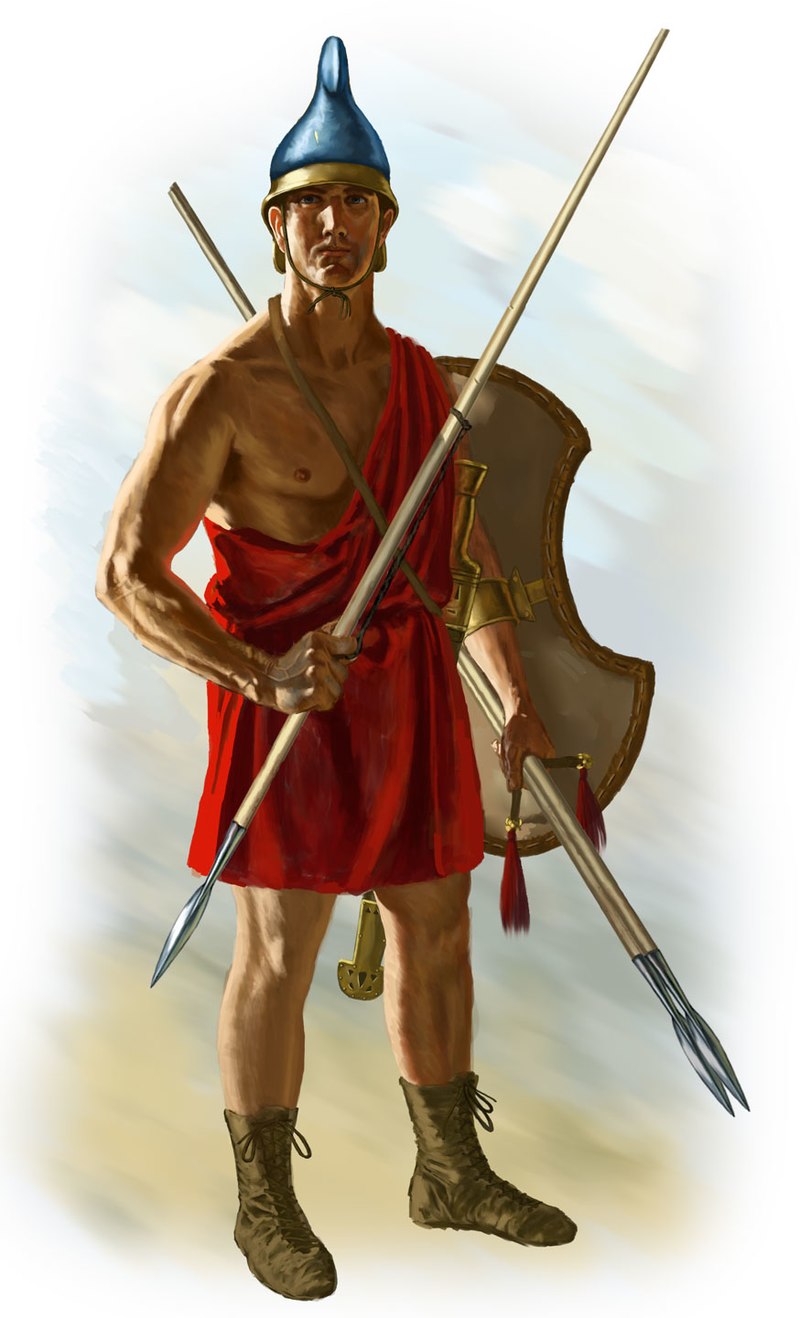
Pike
A pike is basically a very long spear designed to be used by infantry. It is not meant for throwing. We need to stress that length was an important aspect of the pike. One rule of thumb for differentiating a pike with a normal spear is that a pike is a two handed weapon and can’t be used with a single weapon. If you can use it with one hand, it is just a spear or javelin, not a pike. It could range from 3 to 7.5 meters long. The pike was often not used together with a shield. The idea of fighting with a pike is to keep one's enemies at a distance. If a pikeman fails at this, they would need to rely on a backup weapon since a pike isn’t much use at really close range. Soldiers would need to be well trained as formation was critical to effective pike use.

Halberd
The halberd is a polearm. It is basically a long pole with an axe head mounted on the end. The tip also features a spike. The spike and axe head are generally one piece. The reverse side of the axe head features a hook for snagging mounted opponents. This weapon is well known in the context of its use by the swiss.
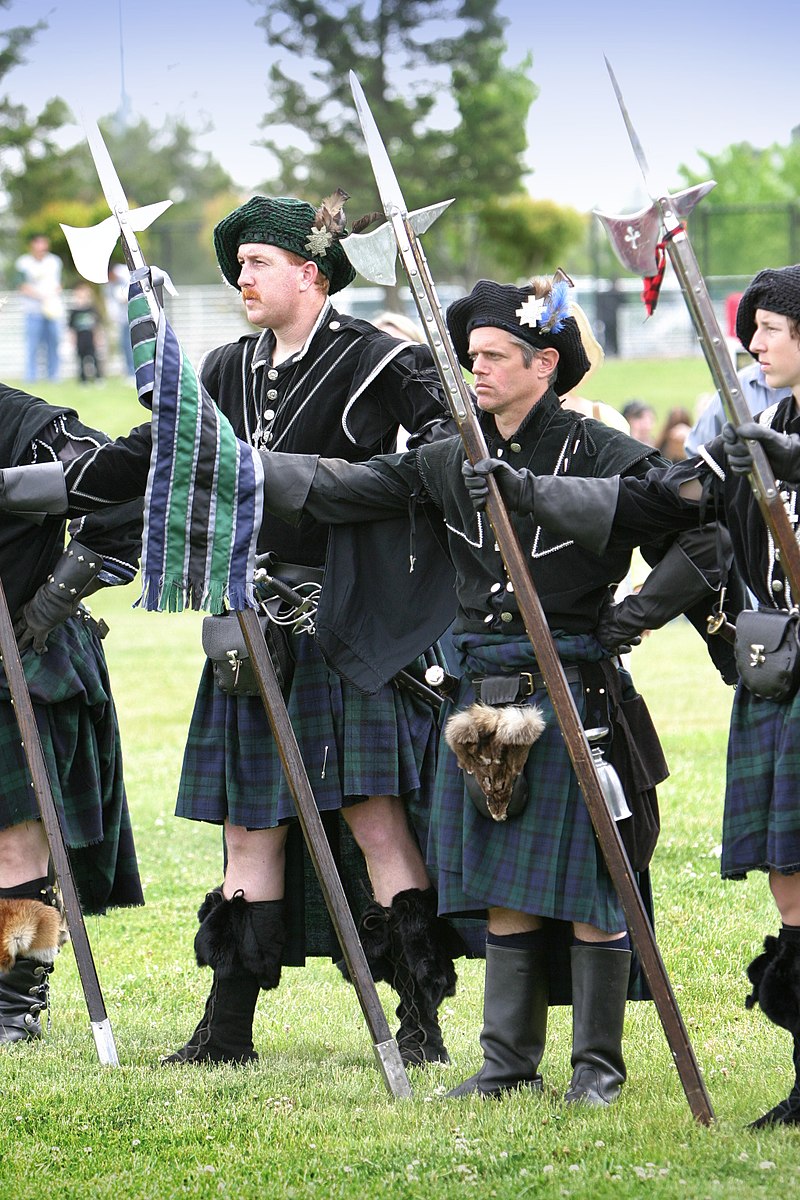
Military Fork
This is basically a military weapon that evolved out of the farm tool, the pitchfork. It has two prongs which are straight, unlike the original pitchfork which is more curved. This could be seen as a substitute for a spear.

Trident
This is a three pronged spear. It is used either for fishing or as a weapon. It has a lot of symbolic significance as well. As far as I can tell, it is not a medieval weapon. I wouldn’t rule out the idea that it may have had some use as a weapon during this period.
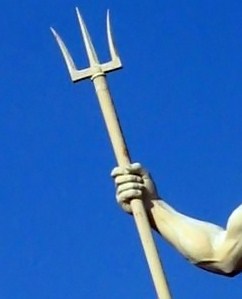
Ranseur
This is a spear with a crescent shaped cross hilt at the base of the head. It kind of looks like a trident or might remind you of one if you aren’t paying attention.
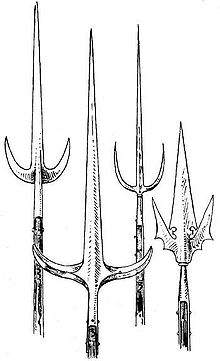
Ahlspiess
The Ahlspiess is basically a type of spear. For the best description just refer to the picture here.

Partisan
OK, this is basically a spear with little wings on the sides of the spear head (you have to see the picture). They were apparently used to parry sword attacks.
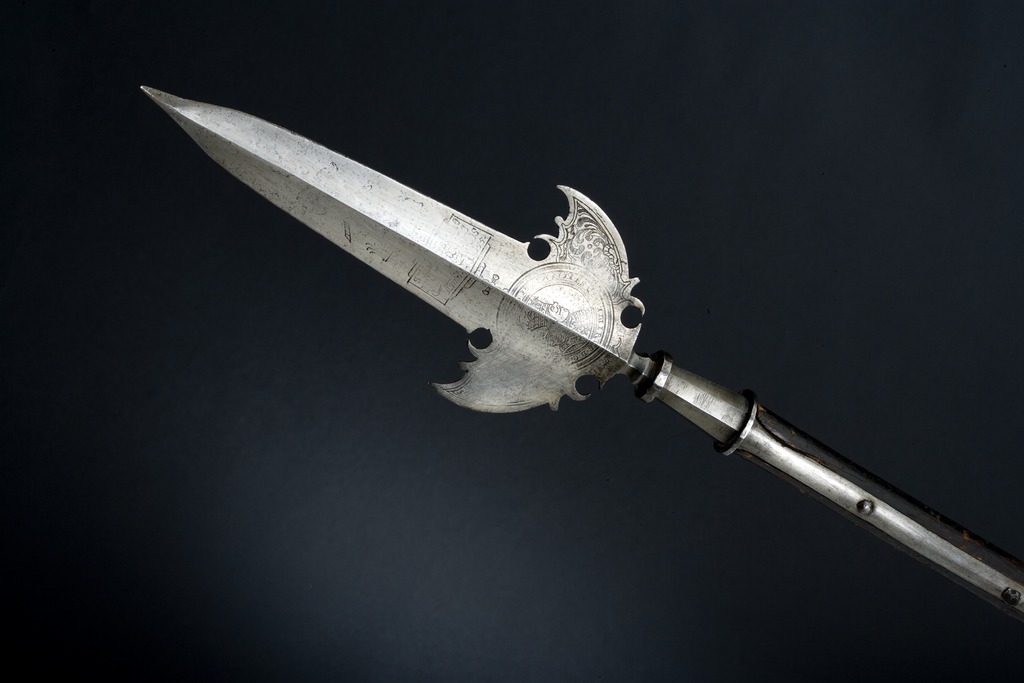
Bardiche
The Bardiche is a type of polearm. It is an axe head mounted on a pole. It is also called the long pollaxe. In this sense it is similar to a halberd. It doesn’t feature a spike on the tip like you would find on a halberd. The blade itself sometimes extends in a pointed manner almost serving the same purpose. It also doesn’t have a hook for catching mounted riders, another difference from the halberd. It is actually a descendant of the Danish axe. The blade did vary in shape and length.
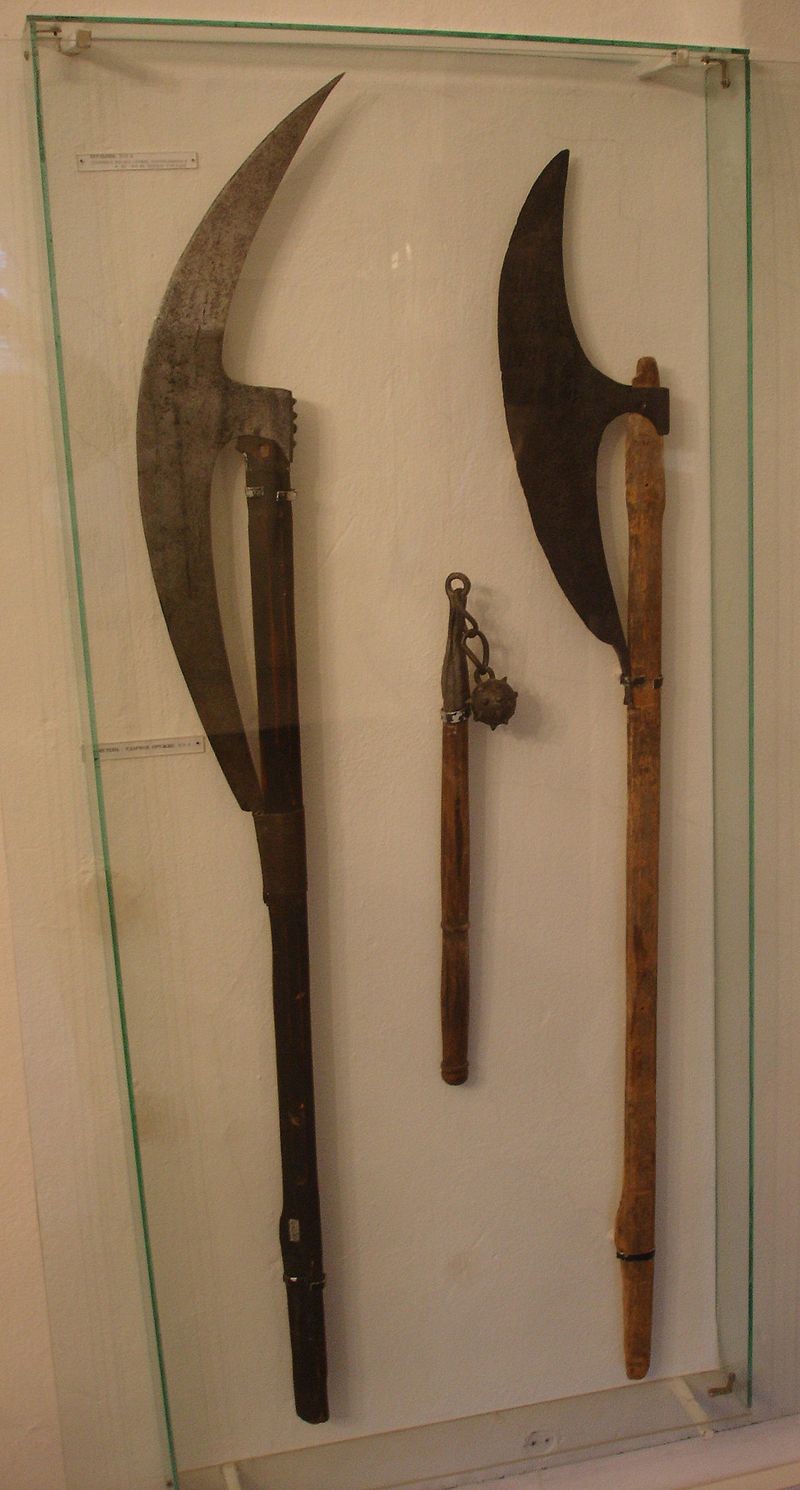
Pollaxe
The pollaxe is different from the bardiche and halberd. I would say that it is probably most similar to a halberd. The key difference with a halberd is that it has a smaller blade which concentrates force on one spot. It was geared towards penetrating armor. Either end may also feature an axe, hammer, or spike. The head of a pollaxe also wasn’t usually a single piece like the head of a halberd.
Bill
This is a hooked blade on the end of a pole. See the picture. It isn’t super elaborate. I can’t imagine it took too much creativity to come up with this variant of polearm.

Glaive
It is a single edged blade on the end of a pole. Just look at the picture. That's what it is. It is used a lot like the many other bladed polearms.
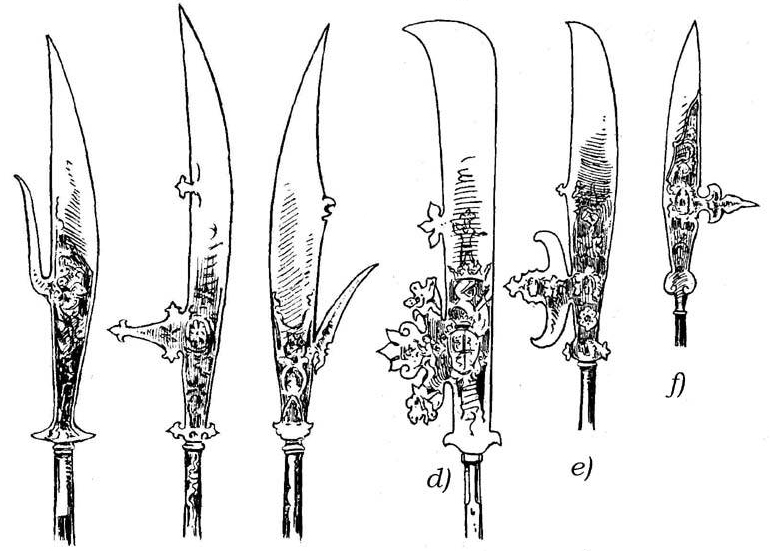
Sovnya
As far as I can tell this is the same thing as the glaive. It was popular in Russia.

Spetum
This is a polearm with a long blade/pointed head on the end. It has two more prongs/blades coming out the sides. You really have to see the picture for this one.
Swordstaff
This is basically a sword (with hilt) mounted on a pole.
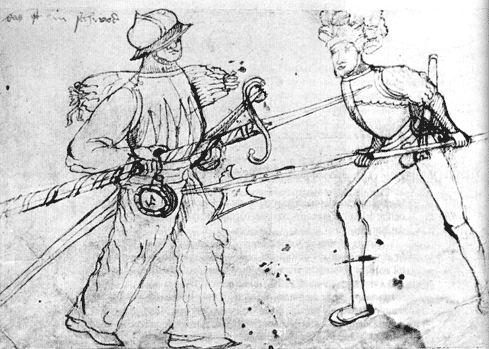
Voulge
This is yet another polearm. It is different because it is basically a cleaver type blade on the end of a pole. It isn’t just a plain cleaver blade though. It has big spike that protrudes out of the top part of the cleaver blade. It fits on the end of a pole with a socket.
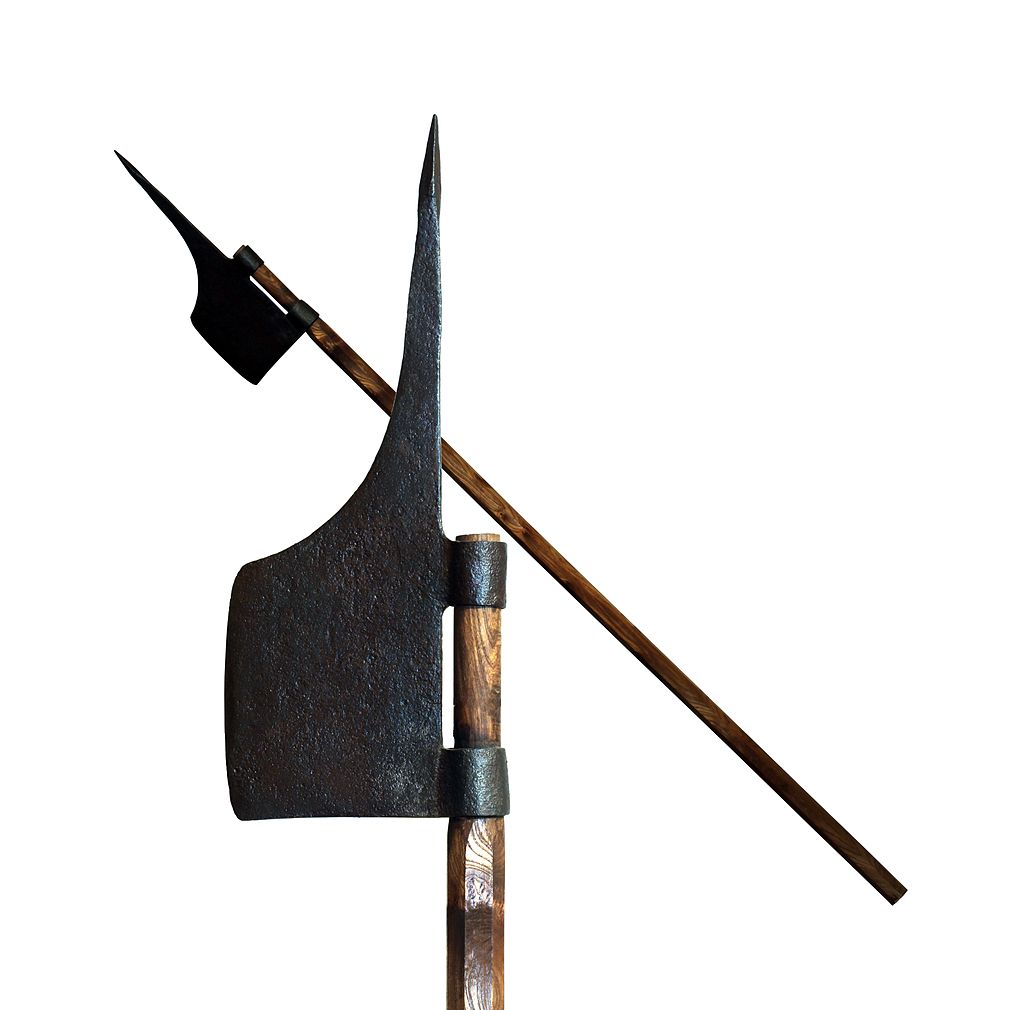
Guisarme
This is a pruning hook on a spear shaft. It is a peasant weapon that developed, unsurprisingly, out of regular tools. Peasants had a habit of combining hand tools with poles to construct new weapons. When you see this, you have to think, “Who came up with that goofy contraption?”. Those peasants are always innovating though. It is said that they behind a huge number of developments. This specific weapon is actually said to be very significant and is supposed to hold second place to the spear in terms of significance. That should probably surprise you. It did surprise me to learn that.
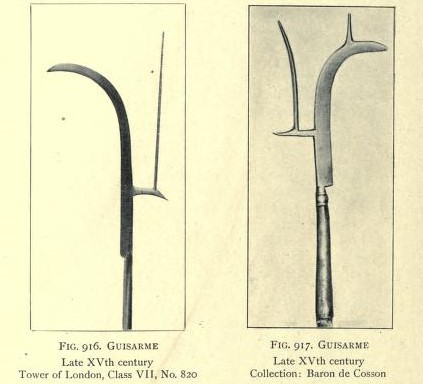
Lochaber axe
This is a type of halberd that was used mostly just in scotland. It is heavy. It was used against infantry and cavalry. Note the blade shape and the actual hook in the pictures. It is easy to miss the hook if you don’t look carefully.
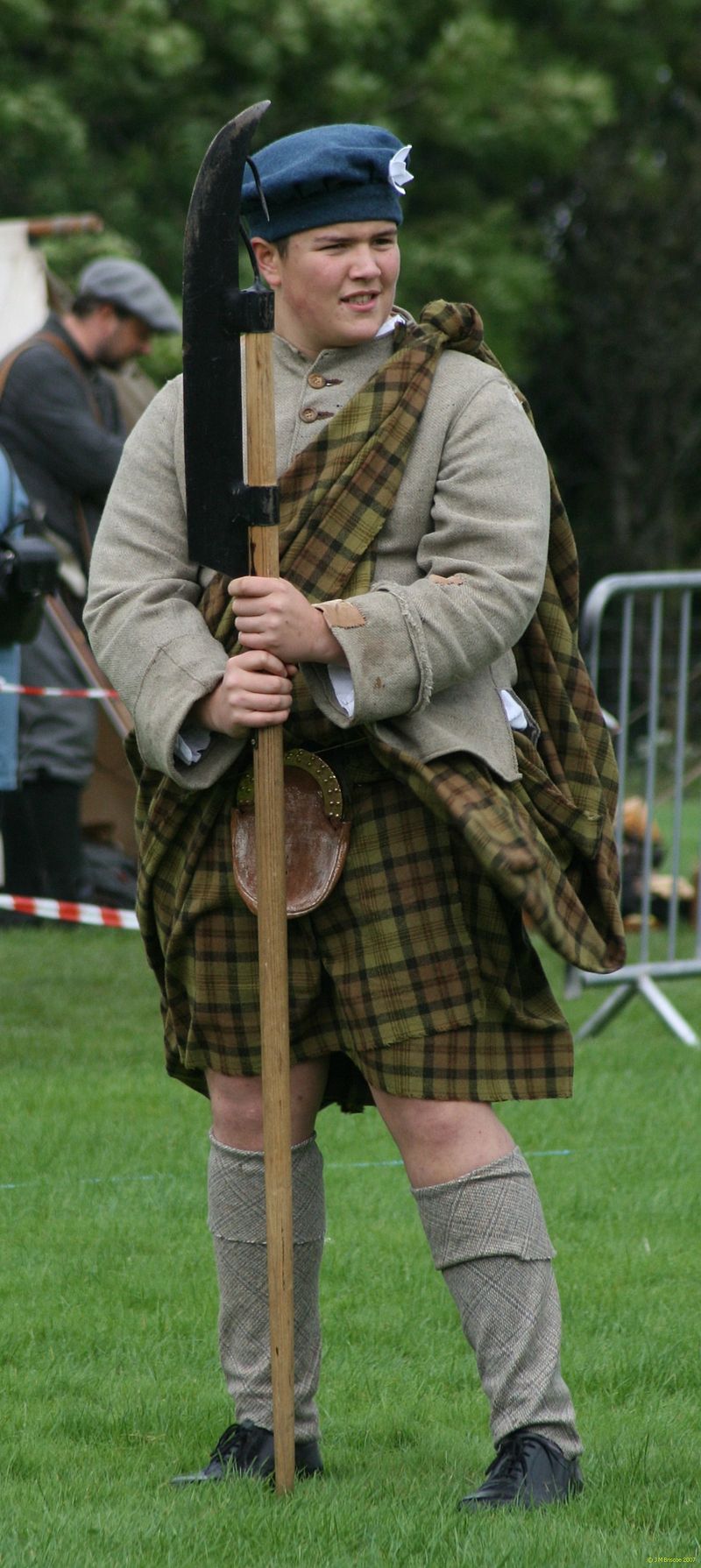
Man Catcher
OK, this is one of the freakiest weapons you are likely to see all week. You can tell right away that this is not something you want to be caught by. It is easy to tell how it might be used and why it might be useful in the context of Medieval combat. It is a pole arm. It is designed to pull a mounted fighter from their horse. Good luck if you get caught by one of these. As dangerous as the spikes look, this isn’t meant to kill the victim. It is actually meant to capture them alive. They are assumed to be armored. The man catcher was commonly used to capture nobles as prisoners. Wow though; the things people come up with.

Bec de Corbin
This is a type of war hammer but it is also a pole are and we are categorizing it as one. It basically consists of a long pole with both a spike and a hammer head. The fluke was used to tear into chain mail or thin plate armor. It seems that it is geared towards being a counter measure for armor. This seems to be the case with a lot of weapons that developed in parallel to armor. It is different from the lucerne hammer, though it is very similar.

Lucerne hammer
You have probably always been curious about the lucerne hammer. Many people are. This is another hammer based polearm. It has many similarities with the bec de corbin. It has been described as a combination of this and the blunt war hammer. It is actually said to have 3 to 4 prongs. The handle is generally around 2 meters long. It would usually have two spikes. One spike would be on the top. This is used for thrusting. The other would be opposite to the blunt side of the head. As a blunt weapon, it is great for smashing armor. Smashing does damage to the wearer even when not penetrated. It was also great at actually penetrating armor using either of its two spikes. It served as a versatile, all around armor counter measure. In further demonstration of its versatility it was also great for pulling mounted riders off of their horses.

War Scythe
This resembles a scythe used for agricultural use. The shape is based on a normal scythe but it is specifically built for combat. It was long and gave the wielder a lot of leverage.
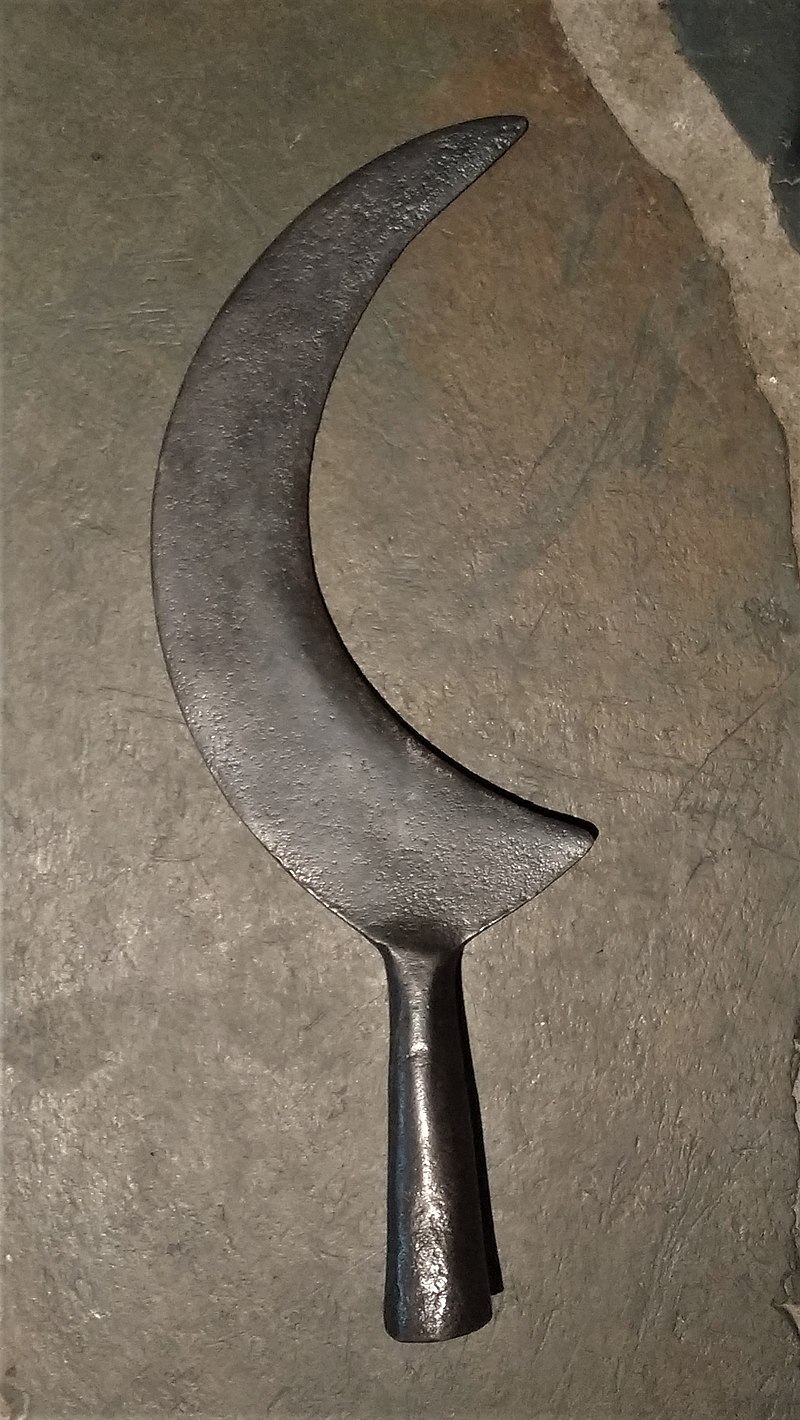
Medieval Weapons - Ranged
We are going to need to add an entire section on ranged weapons.... Someday....